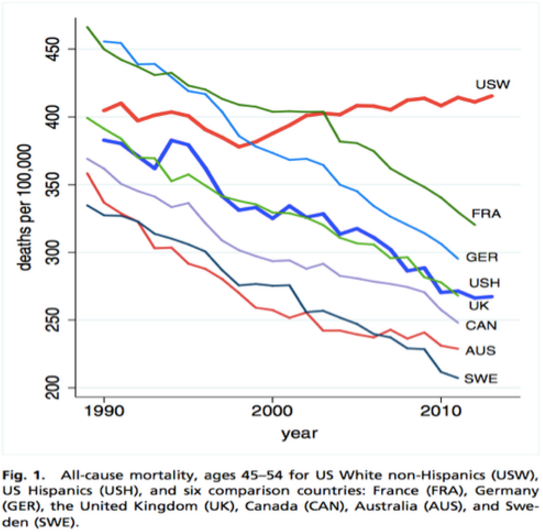I have a new post at Econlog that is far more important that this throwaway effort. I also recommend a recent post on China by David Beckworth, which I initially overlooked. And excellent posts on the Fed by Tim Duy and Evan Soltas. But if you insist on continuing . . .
Scott Alexander is perturbed that 80% to 90% of doctors don’t know how to answer an extremely simple statistics question like this:
Ten out of every 1,000 women have breast cancer. Of these 10 women with breast cancer, 9 test positive. Of the 990 women without cancer, about 89 nevertheless test positive. A woman tests positive and wants to know whether she has breast cancer for sure, or at least what the chances are. What is the best answer?
(OK, technically 26% got it right, but it was multiple choice with 5 choices—you do the math.) Nobody who’s taught in college should be surprised by this. Unless you test students on material that they are told they’ll be tested on, and that they studied for the night before, most students basically can’t answer anything, even 8th grade level questions. Heck, I’d probably get some elementary stat questions wrong (although at least I can do the “story problems” like the one above) Alexander is concerned about the implications of this (here’s he’s referring to another question):
Good news! 42% of doctors can correctly answer a true-false question on p-values! That’s only 8% worse than a coin flip!
And this paragraph is your friendly reminder that six months after this study was published, the FDA decided it was unsafe for individuals to look at their own genome since they might misunderstand the risks involved. Instead, they must rely on their doctor. I am sure that statisticians and math professors making life-changing health or reproductive decisions feel perfectly confident being at the mercy of people whose statistics knowledge is worse than chance.
Obviously I agree. But the FDA is model of rationality compared to the SEC. At least with the FDA you can sort of understand the logic of the regulation. If doctors actually knew what they theoretically should know, what they were taught in college, then they would have more expertise than the average person. But not even that excuse is true for the regulation of stock pickers:
The Investment Advisers Act of 1940 is a United States federal law that was created to regulate the actions of those giving investment advice for compensation as means to protect the public.
The Act defines an “investment adviser” as anyone who, for compensation engages in the business of advising others about the value of securities or the advisability of investing in, purchasing, or selling securities.
So you go to your investment adviser for stock picking advice, not to some idiot like me. And that’s because your investment advisor is better able to pick the right stocks and mutual funds than I can. Or at least that’s the theory. In fact, they do worse than I’d do, in all but a few cases. The rest of the post will exclude the tiny number of investment advisors that simply tell you to put everything into low cost index funds.
For the rest, the vast majority of regulated investment advisers, they either understand than indexed funds outperform managed accounts, and hence are dishonest, or they don’t understand and are incompetent. So the SEC regulation virtually forces people like my mother to go to investment advisers who are either knaves or fools.
(On the other hand if doctors profit from needless cancer tests, then maybe medicine isn’t so different from the investment industry. Maybe the doctors are just pretending not to understand statistics, as a cover.)
Progressives like to talk about the “science” of an issue (at least sometimes, not the science of gender differences, or GMO foods, or taxing capital income, or free trade, or that studies show that voucher schools are cheaper, but at least for global warming.) OK, the science of finance says that indexed funds outperform managed funds. That stock pickers are no more helpful to investors than soothsayers. So if we force stock pickers to be regulated, why not do the same for palm readers, fortune tellers, soothsayers, tea leaf readers, and all the rest? Alternatively, is the SEC going after unlicensed stock pickers any different from the leaders of Salem going after witches? Aren’t both types of prosecution equally “anti-science”?




